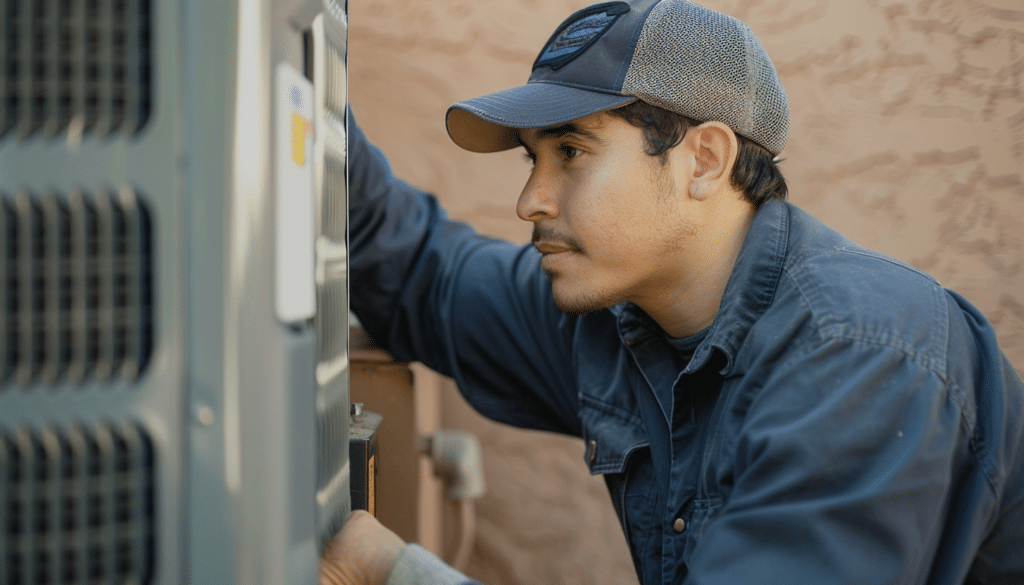Fixing Heating Systems: Easy Steps to Follow
When the winter chill sets in, a functioning heating system is essential for comfort and safety. Understanding how to troubleshoot and fix common issues can save you time and money. This comprehensive guide will walk you through the steps of fixing heating systems, ensuring your home remains warm and cozy.
Understanding Your Heating System
Before diving into repairs, it’s crucial to understand the type of heating system you have. The most common systems include:
- Furnaces: Use natural gas, propane, or electricity to heat air, which is then distributed through ducts.
- Heat Pumps: Transfer heat from outside to inside during the winter and reverse the process in the summer.
- Boilers: Heat water to provide either hot water or steam for heating.
- Ductless Mini-Splits: Offer heating and cooling without the need for ductwork, suitable for individual rooms.

Common Heating System Problems and Solutions
1. Heating System Won’t Turn On
- Check the Thermostat: Ensure it is set to “heat” and the temperature is set higher than the current room temperature. Replace batteries if necessary.
- Circuit Breaker: Check your home’s electrical panel for tripped breakers and reset if needed.
- Pilot Light: For gas furnaces, ensure the pilot light is lit. Follow manufacturer instructions to relight it if it’s out.
2. Inadequate Heat
- Air Filters: Dirty filters can restrict airflow. Replace filters regularly to maintain efficiency.
- Blocked Vents: Ensure all vents are open and unobstructed.
- Thermostat Issues: Calibrate the thermostat or replace it if it’s malfunctioning.
3. Noisy Operation
- Loose Parts: Tighten any loose parts or screws that may be causing noise.
- Belt Issues: Check for worn-out belts and replace them if necessary.
- Blower Motor: Lubricate the blower motor bearings if they are making noise.

Preventive Maintenance Tips
Regular Maintenance
- Annual Inspections: Schedule professional inspections annually to ensure your system is operating efficiently.
- Filter Replacement: Replace air filters every 1-3 months, depending on usage and filter type.
- Duct Cleaning: Clean ducts every 3-5 years to ensure efficient airflow and reduce allergens.
Detailed Steps for Specific Heating Systems
Fixing a Gas Furnace
- Turn Off the Power: Ensure the power to the furnace is off before beginning any repairs.
- Check the Thermostat: Verify settings and replace batteries.
- Inspect the Pilot Light: If out, relight according to manufacturer instructions.
- Examine the Gas Valve: Ensure it is turned on.
- Clean the Flame Sensor: If the pilot light is on but the furnace won’t start, clean the flame sensor with a fine abrasive pad.
- Replace Air Filters: Ensure filters are clean to allow proper airflow.
Fixing a Heat Pump
- Check the Thermostat: Ensure it is set to the correct mode and temperature.
- Inspect Outdoor Unit: Clear any debris from around the unit.
- Clean Coils: Clean the coils to ensure efficient heat transfer.
- Check Refrigerant Levels: Low refrigerant can affect heating; this requires a professional to check and refill.
- Inspect the Reversing Valve: If the system isn’t switching between heating and cooling, the reversing valve may need attention.

Safety Considerations
- Carbon Monoxide Detectors: Install detectors near all sleeping areas and ensure they are functioning properly.
- Regular Inspections: Regular professional inspections can identify potential safety issues before they become serious.
- Proper Ventilation: Ensure all vents and exhausts are unobstructed to prevent dangerous buildup of gases.
FAQs for Fixing Heating Systems: Easy Steps to Follow
Q: How often should I replace my heating system’s air filter?
A: It’s best to replace your air filter every 1-3 months, depending on the type of filter and your system’s usage.
Q: What should I do if my heating system is making strange noises?
A: Noises can indicate loose parts, worn belts, or motor issues. Inspect and tighten any loose parts, replace worn belts, and lubricate motor bearings if needed.
Q: My heating system isn’t producing enough heat. What could be the problem?
A: Check the thermostat settings, replace dirty air filters, and ensure all vents are open. If the problem persists, it may require a professional inspection.
Conclusion
Fixing heating systems can be manageable with the right knowledge and tools. Regular maintenance, understanding common issues, and knowing when to call a professional are key to keeping your heating system running efficiently. By following this guide, you can address many common problems and ensure your home remains warm and comfortable throughout the winter. For professional assistance, don’t hesitate to contact Wintri, your trusted heating system expert.

